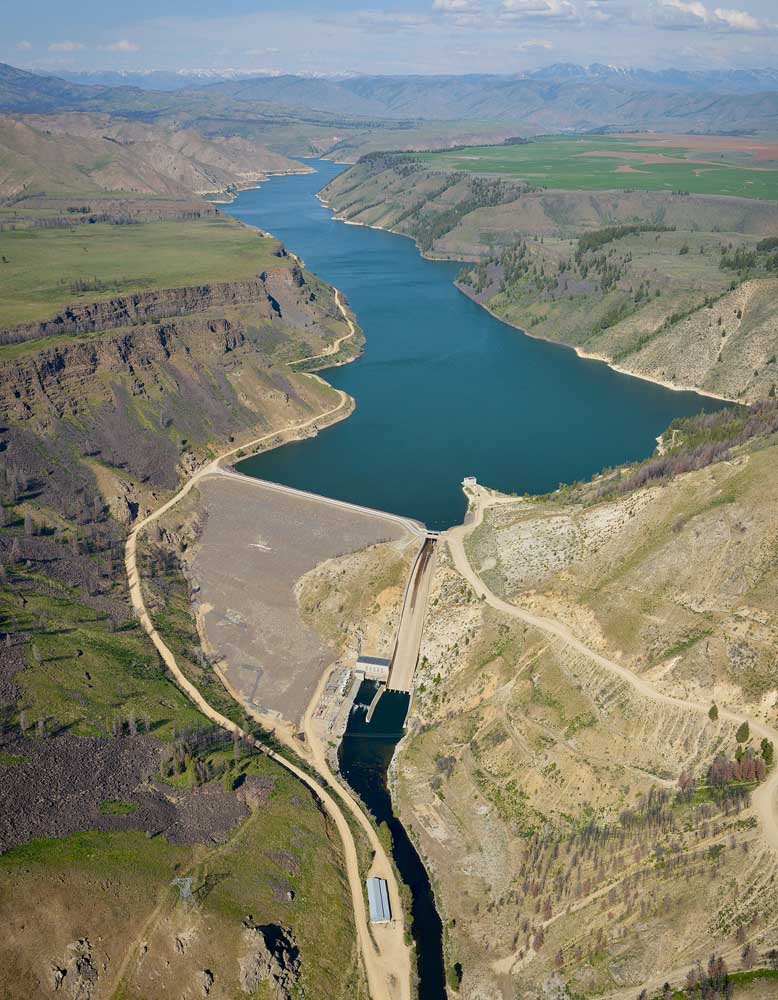Idaho water board spends ARPA funds on raising dam, recharge projects
Published 12:15 pm Wednesday, September 21, 2022

- The Anderson Ranch Dam in Idaho will be raised to increase its water storage capacity.
The Idaho Water Resource Board will spend nearly $87 million in American Rescue Plan Act funds on water projects, most of it going toward raising a dam to increase its water storage capacity.
Some $72.9 million represents the state’s share to raise Anderson Ranch Dam, $8.3 million is for two new Upper Snake Basin aquifer-recharge projects and $5 million is for initial design and contracting associated with building a pump station and pipeline from the Snake River to Mountain Home Air Force Base to increase its water supply.
Rescue Plan Act funds will be used in lieu of state money previously appropriated for water projects where possible, a board news release said. State money thus would be available for additional future projects.
The 2022 Legislature set aside $250 million of the state’s American Rescue Plan Act funds, which address economic impacts of the COVID-19 pandemic, to support Water Resource Board projects that qualify under the federal guidance.
Of that total, lawmakers made $100 million from the ARPA State and Local Fiscal Recovery Fund available for the board to use in fiscal 2023, and targeted an an additional $50 million in subsequent years through 2026.
The U.S. Bureau of Reclamation owns Anderson Ranch Dam and reservoir northeast of Mountain Home. The total cost to raise the dam by six feet is estimated at $83.3 million. Allocation of Rescue Plan Act funds will satisfy the state’s non-federal cost-share obligation based on current estimates, the board said.
Reclamation is expected to provide revised estimates next spring, finish environmental compliance work in winter 2023-24 and complete final design in summer of 2024.
The 456-foot dam stores 413,000 acre-feet of water. Raising it by six feet would add 29,000 acre-feet.
The Upper Snake recharge sites the board funded are $3.38 million for the Goyne Sump injection well near Lake Wolcott and $5 million for Hamer Road near the Egin Bench recharge site.
At Goyne, plans call for connecting a Minidoka Irrigation District canal to the injection well site and adding pumps and capacity to existing infrastructure.
At Hamer Road, the board aims to develop a new, 291-acre recharge basin in lava fields on Bureau of Land Management land, and will work with BLM on permitting.
The potential recharge capacity is 100 cubic feet per second at Goyne and 200 cfs at Hamer.
The board aims to return an average of 250,000 acre-feet to the aquifer. Wesley Hipke, recharge project manager, said volume typically tops out at 150,000 acre-feet in dry years, so “we need additional recharge capacity during the wet years to be able to hit our goal.”
“To make our goal, we need every site possible, especially in the Upper Snake,” said board member Dean Stevenson of Rupert. Significant volume is needed from this part of the river, and “these are the best two sites we’ve looked at so far.”






